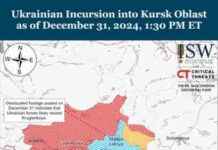When it comes to breaking news, tensions between nations can escalate quickly, and the recent incident involving a Ukrainian drone striking a Russian-seized ship in Crimea is a prime example of this volatile situation. The Ukrainian drone targeted the Russian vessel Fedor Uryupin, causing damage but fortunately not sinking the ship. This attack occurred on Monday, December 23, around 17:00 in the bay near the village of Chornomorske in Crimea.
Ukrainian Drone Attack
According to reports from the Crimean Wind Telegram channel, the Ukrainian drone hit the Fedor Uryupin vessel above the waterline, resulting in significant damage to the ship. Despite the vessel not sinking, the attack serves as a clear indication of escalating tensions between Ukraine and Russia in the region.
Background of the Fedor Uryupin Vessel
The Fedor Uryupin vessel, with the International Maritime Organization (IMO) number 9443499, was constructed in 2010. Seized by Russia from Ukraine in 2014 during the annexation of Crimea, the ship is officially owned by the Ukrainian state-run company Chornomornaftogaz. Although the vessel has not been actively used recently, it continues to fly a Russian flag, adding a layer of complexity to the ongoing conflict between the two nations.
Security Measures in Crimea
In response to the threat of drone attacks, the Russians in Crimea have taken precautions by covering their warships with support vessels. This defensive strategy highlights the ever-present risk of potential attacks and the need for heightened security measures in the region.
As tensions continue to rise between Ukraine and Russia, incidents like the recent drone strike on the Fedor Uryupin vessel serve as reminders of the fragile peace in Crimea. The implications of such provocations extend beyond the immediate damage caused, raising concerns about the potential for further escalation in this highly volatile geopolitical landscape.
Being personally impacted by conflicts between nations can evoke a range of emotions, from fear to anger to uncertainty. It’s crucial to remember that behind every headline and statistic are real people whose lives are affected by these events. As we navigate through these turbulent times, let’s strive to cultivate empathy and understanding towards those caught in the crossfire of geopolitical disputes. How can we support peace and dialogue in the face of such conflicts? Let’s reflect on these questions and consider how we can contribute to a more peaceful and harmonious world for all.

















